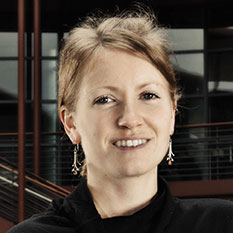On the importance of storytelling in medicine
Dhruv Khullar, a resident in internal medicine at Massachusetts General Hospital and a contributing writer to the New York Times, will deliver the closing keynote at this weekend’s Medicine X | ED. Follow @StanfordMedX for highlights from the conference, or watch live here.
Medicine plays out on two tracks. On one, the academic research machine churns along, leaving abstracts and data sets in its wake. On the other, human lives speed forward, detailed by the smallest daily considerations — a morning pill — and the largest triumphs and tragedies. Birth, love, disease, death.
Physicians, then, are tasked with living a split life, in parallel. They consume and contribute to literature. They open up the hospital gown and palpate soft skin.
We’re familiar with the people who seem to have mastered the one-person double act. But Dhruv Khullar, MD, MPP, believes too many are unprepared for it.
While academia is good at generating knowledge, Khullar says, medical professionals consistently fall short in taking these insights and making sure they’re translated into real-world impact — a failure that’s in part due to the type of language they use.
“We’re very cautious, we’re very nuanced,” he says. “X might be associated with Y, or there’s a signal toward Z. But most people talk in a more direct and forceful manner.”
Khullar, an internal medicine resident at Massachusetts General Hospital and a contributing writer to the New York Times, will expand on the importance of storytelling in health care when he delivers the closing keynote at Medicine X | ED on Sunday.
But he says this simple framework can help any researcher better communicate with the public and influence policy — a timely lesson given Saturday’s March for Science:
- First, tell the story of self. Why are you called to particular issue?
- Second, tell the story of us. How do your own research and your own interests and values connect to the experiences of people around you?
- Third, tell the story of now. What makes the challenge you’re addressing urgent?
Being able to craft a good story, to toggle back and forth between the language of academia and the language of the lay public, does two things for a physician, Khullar says. It lets a provider communicate sometimes complicated information to patients and their families; and, as important, it lets that same person communicate on-the-ground realities from the hospital back up into research, policy and public opinion.
When doctors are seeing parents preemptively offering up their sick kids’ birth certificates, as a result of rhetoric around immigration and deportation, or when they’re regularly discharging patients early knowing they lack insurance, his thinking goes, maybe those are things the rest of us should know. Maybe those stories make up their own important data set.






I am a 75 year old female Physiotherapist living in Palo Alto, CA. had polio, scoliosis, bone fusion T8-T9 increase of pains, and after seeing several MD.s, Orthopedics surgeons, medications, seventeen physical therapist, which in many time the pain and dysfunction was increased.
I found in the internet the Schroth- Physi0logic Tridimentional Conservative method originated in Germany.
I went to Germany to be treated and became Certified to practice and teach this method.
At the present time I have NO pain, being in practice full time,
I appreciate very much your innovative programs and I have attended last two years.
It is amazing that still in Stanford most of the Orthopedic surgeons prescribe ” wait and see ” and wait until is too late in order to applied un-necessary surgeries to stop the scoliosis and improve the quality of life